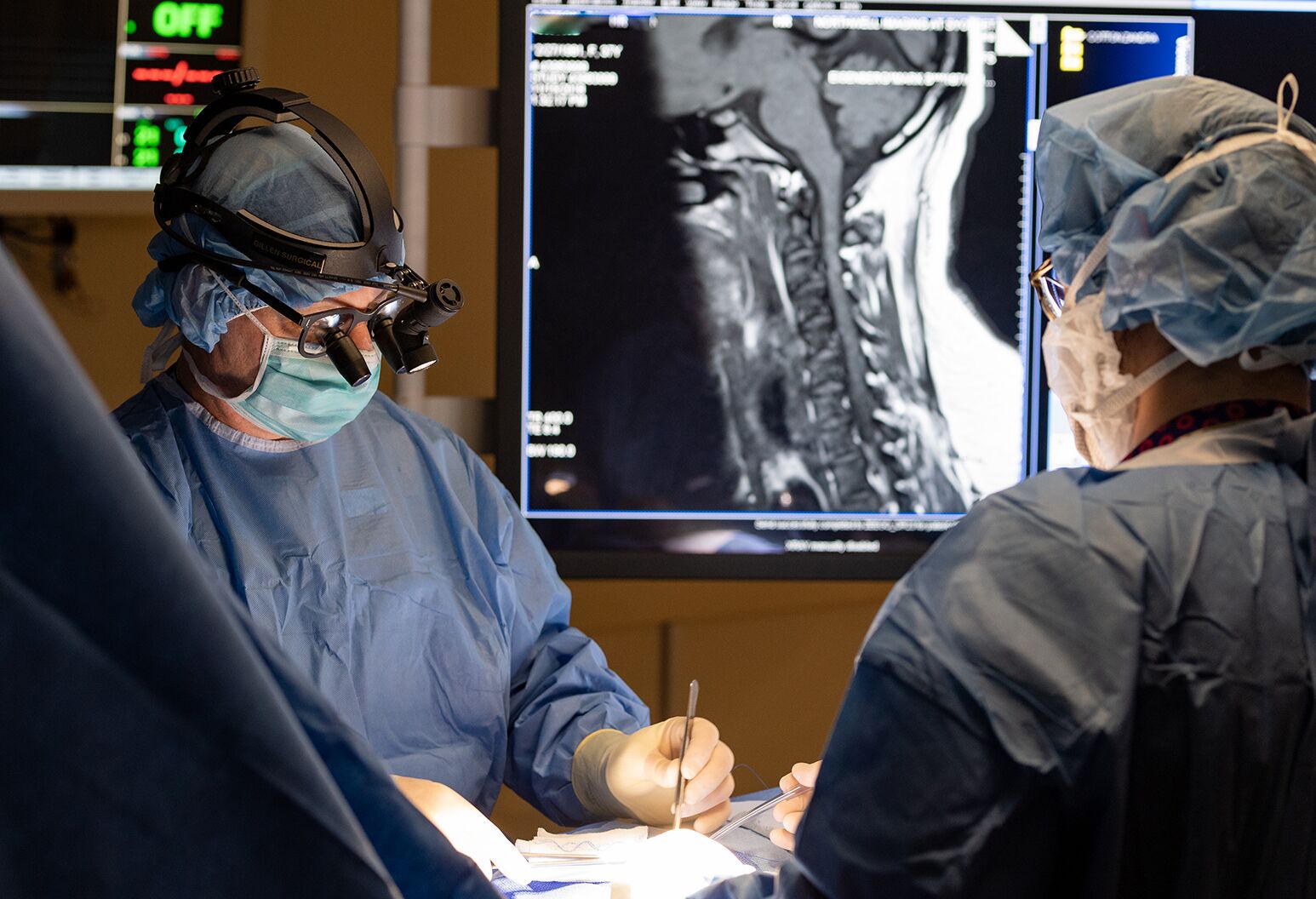Common Treatments Carried Out by the Best Spine Surgeons in St Louis MO
Common Treatments Carried Out by the Best Spine Surgeons in St Louis MO
Blog Article
A Review of Spinal Column Problems That Frequently Result in Surgical Therapies
Back problems such as herniated discs, spine constriction, and degenerative disc illness regularly necessitate surgical treatments when conservative treatments fail to alleviate consistent signs and symptoms. Understanding the nuances of each condition and the corresponding surgical alternatives, such as discectomy or spine blend, is essential for efficient monitoring.
Herniated Discs
Although lots of people with herniated discs may find alleviation via conventional therapies, surgical treatment comes to be a required factor to consider when symptoms persist or intensify - best spine surgeons in st louis mo. A herniated disc happens when the soft inner gel of a spine disc extends via its external layer, possibly pressing neighboring nerves and leading to pain, tingling, or weak point in the extremities
Traditional administration usually consists of physical therapy, pain medicines, and corticosteroid injections, which aim to reduce swelling and improve feature. Nevertheless, in cases where these approaches stop working to ease devastating signs and symptoms, medical choices might be discovered.
The most typical procedure for herniated discs is a discectomy, which involves the elimination of the herniated portion of the disc to alleviate pressure on the impacted nerve origin. In extra extreme cases, spinal combination might be necessary to stabilize the affected vertebrae.
Clients are recommended to review the possible dangers and benefits of surgical treatment with their healthcare carrier to make a notified decision. Eventually, the goal of any medical intervention is to restore function, ease pain, and improve general lifestyle for individuals experiencing herniated discs.
Back Stenosis
Spine constriction occurs when the rooms within the spine slim, leading to enhanced pressure on the spine cable and nerves. This condition can create in various regions of the spine, consisting of the lumbar and cervical locations, frequently because of age-related adjustments, such as degenerative disc disease, arthritis, or enlarging of ligaments.
Clients with spine constriction might offer with signs and symptoms that consist of discomfort, numbness, tingling, or weakness, primarily in the arms or legs. These signs can be exacerbated by tasks that involve standing or walking, often leading people to look for relief with traditional therapies like physical treatment, medications, or epidural steroid shots.
However, when these non-surgical treatments fail to offer ample relief, medical alternatives may be taken into consideration. Common surgical treatments for spinal stenosis include laminectomy, which includes the removal of part of the vertebra to relieve stress, and spine blend, which stabilizes the afflicted area.
Spondylolisthesis
Spondylolisthesis occurs when one vertebra slides ahead over an additional, leading to imbalance of the back. This problem can arise from different variables, including hereditary issues, injury, or degenerative changes in the spinal column. It find more information is most frequently observed in the lumbar region, particularly at the L4-L5 and L5-S1 levels.

When non-surgical techniques stop working to relieve symptoms or when significant nerve compression is present, medical treatment may be warranted. Surgical choices can consist of back blend or decompression treatments, aimed at bring back positioning and alleviating neurological signs.
Degenerative Disc Disease

Patients with DDD commonly experience discomfort that might emit to the legs or arms, depending on the affected region of the back. The problem can be detected with a mix of scientific examination, imaging studies, and patient background. Therapy choices commonly begin with conservative steps, including physical therapy, pain administration, and way of living modifications. Nonetheless, when these approaches fail to offer adequate alleviation, medical interventions might be considered.
Surgical options for DDD might include spine combination or fabricated disc replacement, targeted at stabilizing the affected sector and relieving pain (best spine surgeons in st louis mo). Inevitably, the selection of treatment is individualized, taking right into account the seriousness of the problem, person health, and lifestyle aspects
Spine Growths

Back lumps can arise Visit Website from numerous variables, including hereditary tendency, environmental impacts, and pre-existing medical problems. Patients may offer with a variety of signs and symptoms, consisting of local click reference discomfort, neurological deficiencies, weakness, or adjustments in bowel and bladder function, depending on the lump's size and place.
Surgical intervention may be called for to alleviate symptoms, get a biopsy, or eliminate the growth entirely. The goal of surgical treatment is commonly to decompress neural aspects and support the back. Early detection and intervention are crucial for maximizing outcomes in individuals with spinal lumps.
Verdict
In recap, spine conditions such as herniated discs, spinal stenosis, spondylolisthesis, degenerative disc disease, and back growths regularly necessitate surgical treatment as a result of their potential to cause considerable pain and functional disability. While conservative therapies might offer short-lived relief, surgical choices become essential when signs and symptoms persist or aggravate. Prompt medical diagnosis and treatment play a critical function in recovering feature and boosting the top quality of life for afflicted individuals, emphasizing the value of extensive spine treatment.

Report this page